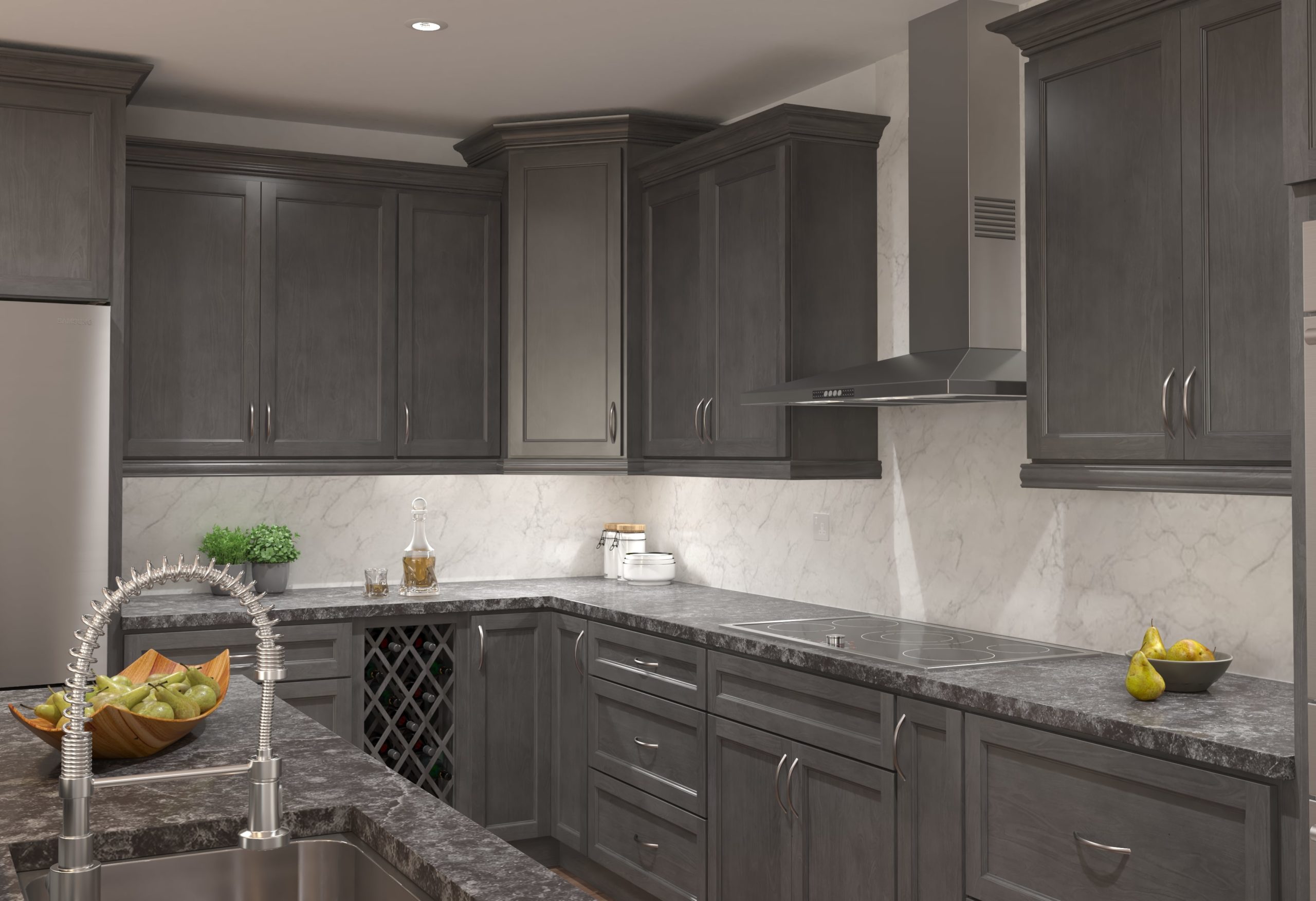Practical Considerations and Materials: Kitchen Tile With Gray Cabinets

Selecting the right tile for a kitchen backsplash and floor, especially when paired with gray cabinets, requires careful consideration of several factors. Durability, maintenance requirements, and cost all play significant roles in determining the best choice for your specific needs and aesthetic preferences. The interplay between these factors and the existing gray cabinetry will ultimately dictate the overall visual harmony and longevity of your kitchen renovation.
Kitchen tile with gray cabinets – The following sections delve into the practical aspects of choosing tile materials, addressing potential installation challenges and offering solutions. We will explore three distinct tile types: ceramic, porcelain, and natural stone, highlighting their strengths and weaknesses.
Tile Material Comparison, Kitchen tile with gray cabinets
Three common tile materials – ceramic, porcelain, and natural stone – offer diverse properties affecting durability, maintenance, and cost. Understanding these differences is crucial for making an informed decision that aligns with the long-term needs of your kitchen.
- Ceramic Tile: Ceramic tiles are generally less expensive than porcelain or natural stone. They are relatively easy to install and maintain, requiring only regular sweeping and occasional mopping. However, they are more porous than porcelain, making them susceptible to staining and water damage. Their durability is moderate; they can chip or crack under heavy impact. They are available in a vast array of colors and styles, offering considerable design flexibility.
- Porcelain Tile: Porcelain tiles are denser and less porous than ceramic tiles, resulting in superior durability and stain resistance. They are more resistant to water damage and are less likely to chip or crack. While more expensive than ceramic, porcelain tiles require less maintenance and offer longer lifespan, making them a cost-effective choice in the long run. Their inherent strength makes them suitable for both backsplashes and floors.
- Natural Stone Tile (e.g., Marble, Granite): Natural stone tiles, such as marble and granite, offer a luxurious and unique aesthetic. They are exceptionally durable and resistant to wear and tear. However, they are significantly more expensive than ceramic or porcelain and require more specialized maintenance, including sealing to protect against staining and etching. Their inherent variations in color and veining contribute to their unique character, but may require careful consideration to ensure visual harmony with gray cabinets.
Installation Challenges and Solutions
Installing tiles in a kitchen, particularly with gray cabinets, presents specific challenges that need careful planning and execution. The following points address potential issues and their solutions.
- Matching Tile Color to Gray Cabinets: Choosing tile colors that complement gray cabinets requires careful consideration of undertones. Cool gray cabinets pair well with cool-toned tiles (blues, greens, whites), while warm gray cabinets might benefit from warmer tiles (beiges, creams, taupes). Samples should be viewed in the kitchen’s lighting to ensure a harmonious match.
- Maintaining Consistent Grout Lines: Maintaining consistent grout lines is crucial for a professional-looking finish. Using spacers of consistent thickness and employing careful installation techniques ensures uniformity. Improper spacing can lead to uneven grout lines, detracting from the overall aesthetic.
- Dealing with Irregular Surfaces: Existing kitchen walls or floors may have irregularities that need addressing before tile installation. Surface preparation is vital. Uneven surfaces can lead to uneven tile placement and compromised structural integrity. Using appropriate leveling compounds ensures a smooth and stable base for the tiles.
Kitchen Tile and Gray Cabinets: A Design Approach
The selection of kitchen tiles in conjunction with gray cabinets necessitates a holistic approach. The overall aesthetic should prioritize balance and harmony. The tile material’s durability and maintenance requirements should align with the intended use and lifestyle of the kitchen. The color palette of the tiles should complement the gray cabinets, creating a cohesive and visually appealing space. Careful consideration of the tile’s size, pattern, and texture further enhances the design’s overall impact.
For example, a sleek, modern kitchen with gray cabinets might benefit from large-format porcelain tiles in a neutral color, such as a light gray or white, to maintain a sense of spaciousness and sophistication. Conversely, a more traditional kitchen could incorporate smaller ceramic tiles with subtle patterns to add warmth and visual interest. Natural stone tiles, with their unique veining and texture, could add a touch of luxury and elegance, but require careful consideration of the maintenance demands associated with such materials. Ultimately, the best choice depends on individual preferences, budget, and the overall design vision for the kitchen.
